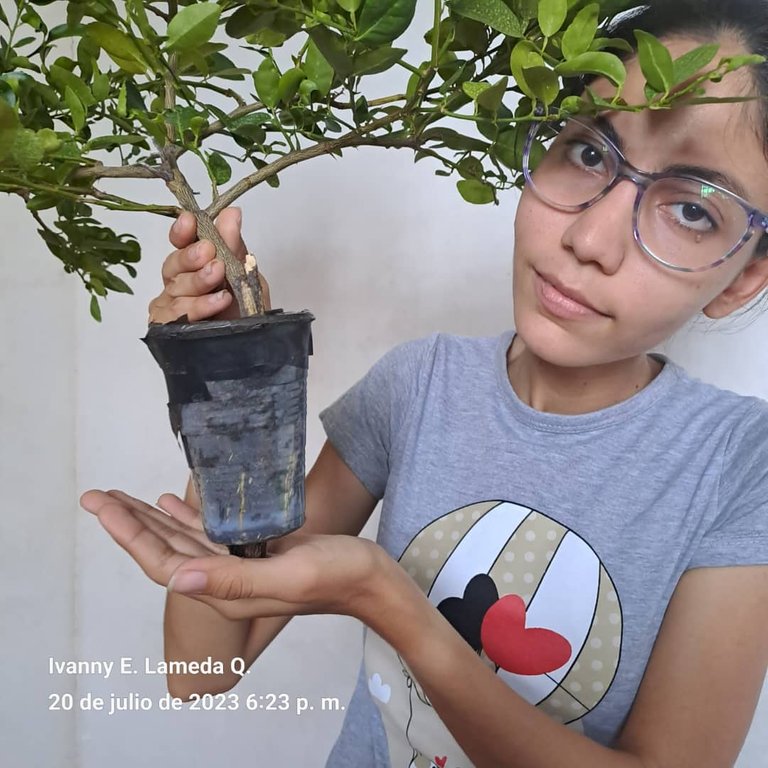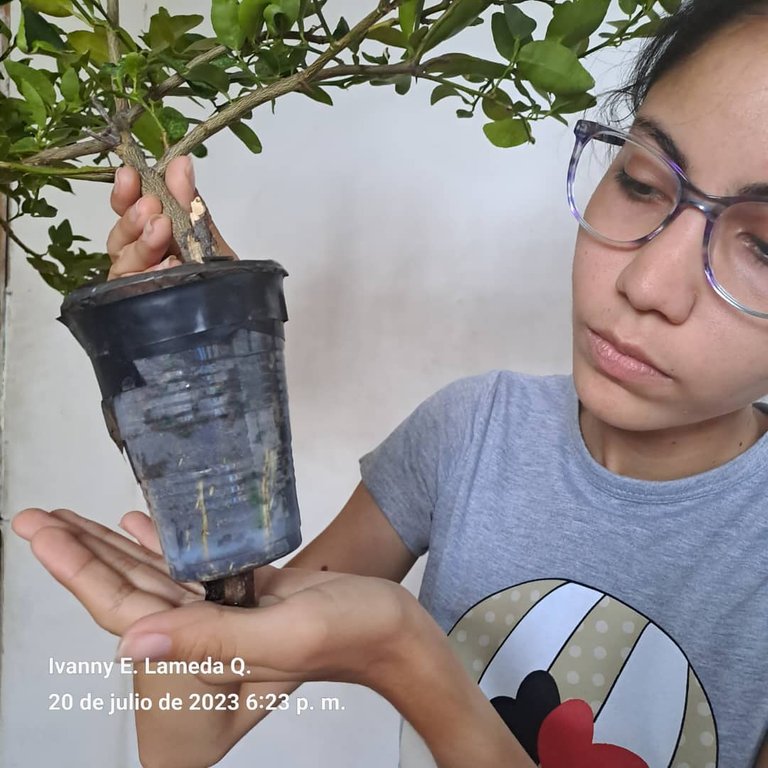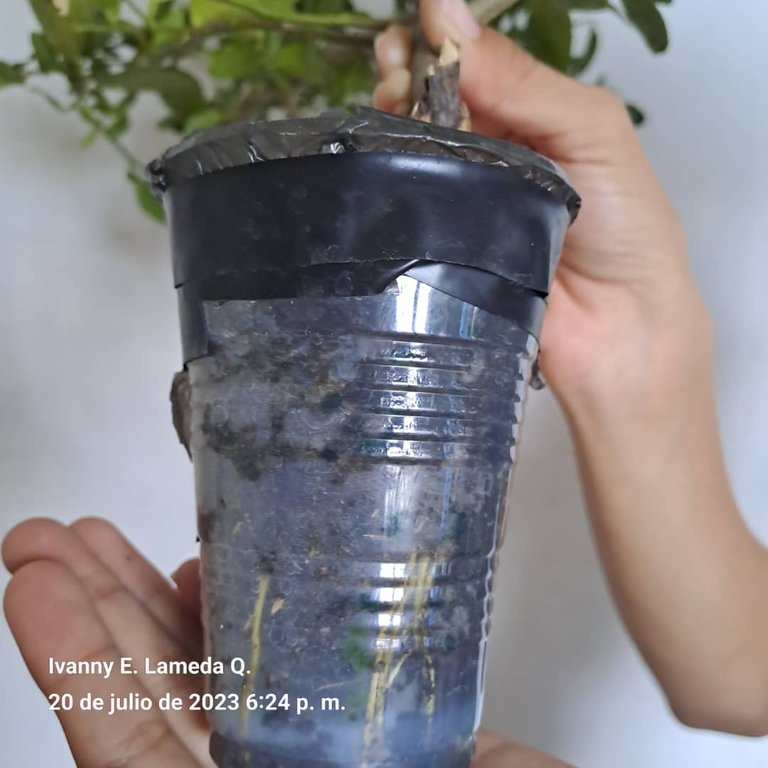Hello, dear #Hivegarden community. I hope you are doing well. This is my entry to #Creative Garden challenge, July. This post is about the Layering Part II. If you want to see Part I this is the link.
I am very happy because the layering was given to me, the result is successful. Just yesterday was the deadline of the necessary days for the lemon cutting to root.

Early yesterday before going to class, I went to my brother's house where the lemon plant is where I did the stratification 46 days ago. Fulfilling the steps of the process to have another adult lemon plant 🍋. With scissors disinfected with alcohol I proceeded to cut the branch, where the wound remained I smeared cinnamon to protect the plant from any infection.
With the rooting part, i.e. the layering, I will present it today at 1:15 pm in the Agricultural Production Technology class for the teacher's evaluation. You are lucky to see the result before the teacher, because the #creativegarden challenge is about to end, I'm in a bit of a hurry, so I'll show you some photos taken with my cell phone yesterday afternoon.

Small roots are observed. This indicates that the preparation of the coconut fiber and worm humus worked and the lemon branch 🍋 successfully gave its roots because it complied with the daily watering. Then this is going to be planted in a pot or bed which will have a substrate that later I will explain the steps and the ingredients or material needed, until it has the strength to then be planted directly into the ground.

Layering is a technique that allows obtaining mature plants faster and can be used to propagate species difficult to reproduce by other methods, it has a high success rate. It consists of inducing the rooting of a stem while it is still attached to the mother plant and then separating it to obtain a new independent plant.
Plants obtained by layering usually develop faster than plants obtained from seeds. This is because the stem already has an established root system before it is detached from the parent plant, allowing for more vigorous and accelerated growth.
The lemon plant was chosen because it offers certain advantages, one of which is that it roots faster than others. Also, because of the need to produce this type of citrus, since it climatizes perfectly in this semi-arid region.
I hope you take advantage of the publication to learn about these techniques of faster propagation, a great help for the gardeners of the world as general information and anyone who wants to can apply this method to any mature fruit plant such as avocado, orange, guava, soursop, or ornamental plants such as cayenne, olive, trinitarians. Did you like the subject? I liked this subject because you learn a lot about gardening, and it has awakened in me a very particular interest that makes me and encourages me to live experiences on the plants of my mother's and my brother's garden.
Regarding the guidelines:
Prompt 1:The thing I love most about the Hive Garden community is....
For me it is a very important window for a new gardener, as is my case because here I can capture the countless experiences about what happens in any garden, you also learn from the experience of other more experienced gardeners in the world, in each publication is known about the climate of various countries, the ravages of climate change and the countless insect pests making disasters in gardens and orchards, also mischief of pets and the havoc that can make the rabbits and squirrels.
Prompt 2:My biggest garden disaster was....
This indication is very interesting, since I am going to tell you that to make this layering I installed it in two lemon plants 🍋, fearing that it was possible that it was not given and with two it was better. Then in one of the plants after doing the layering I look for some sheets of acerolit, because my brother's dog is very naughty, foreseeing that I protect only one, because my brother told me that later he would protect it with other acerolit, and I very confident I went to my mom where I live. The next day my brother went to tell my mother that the koki her dog destroyed the layering, that is to say the glass, she went to reinstall another glass with coconut fiber and humus. And protection was placed on the sides and on the top, but after a few days, it affected the branch, and the layering was ruined again, and the branch ended up drying out. Fortunately it occurred to me to make in parallel in the other plant the other layering, which this one was protected, watered daily and after 46 days it made its roots and it worked. Here the saying goes: Prevention is better than regret, that is to say, there are unpleasant situations that can be avoided if we do something before they happen.
can be avoided if we do something before they occur.
I invite the following to participate, @luckylaica and @antoniarhuiz . This is the link
You have reached the end of my post. Thanks for reading me❤️ Have a nice day 😊❤️ If you need help do not hesitate to write me on my Discord Ivycrafts#0396.❤️
Text and photos are my authorship. Text translated with DeepL. Photos taken with my Xiaomi Redmi 8. Text separator created with Canva Pro.









